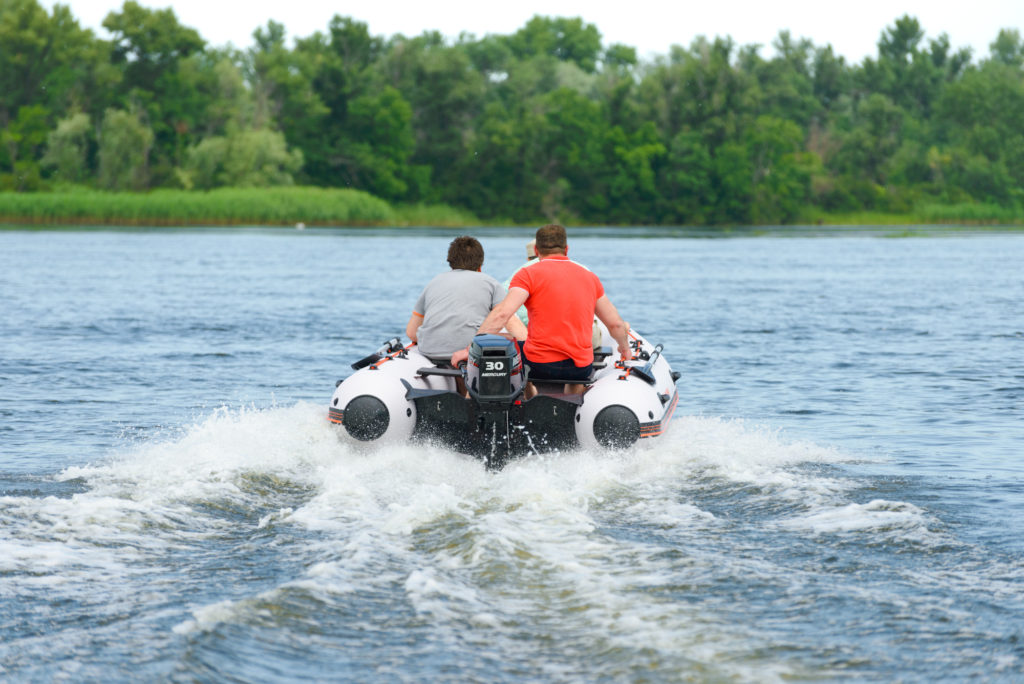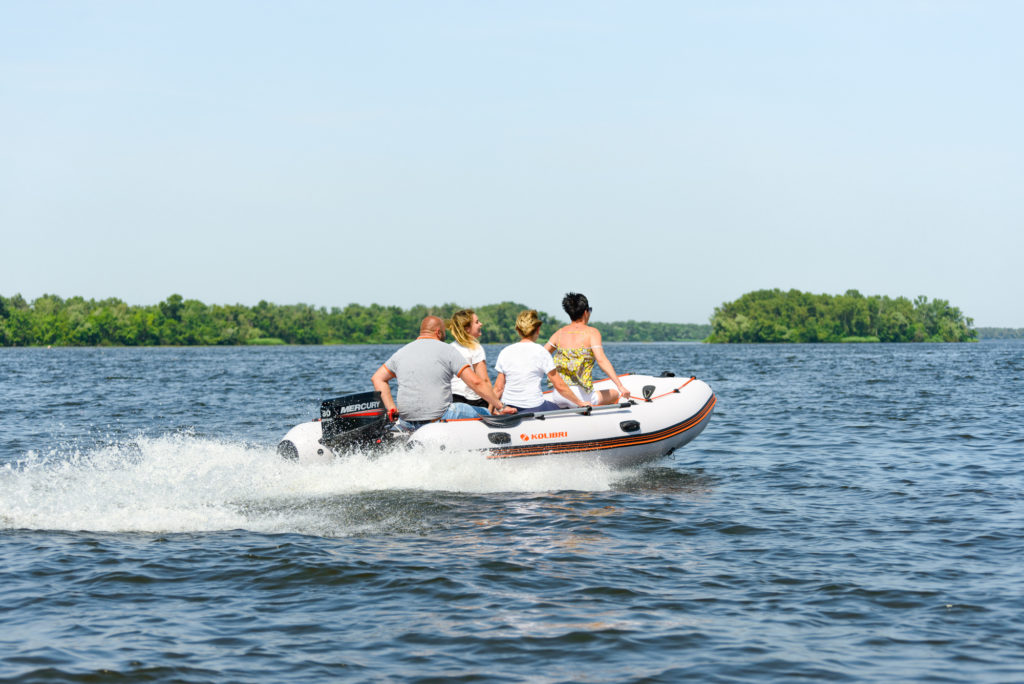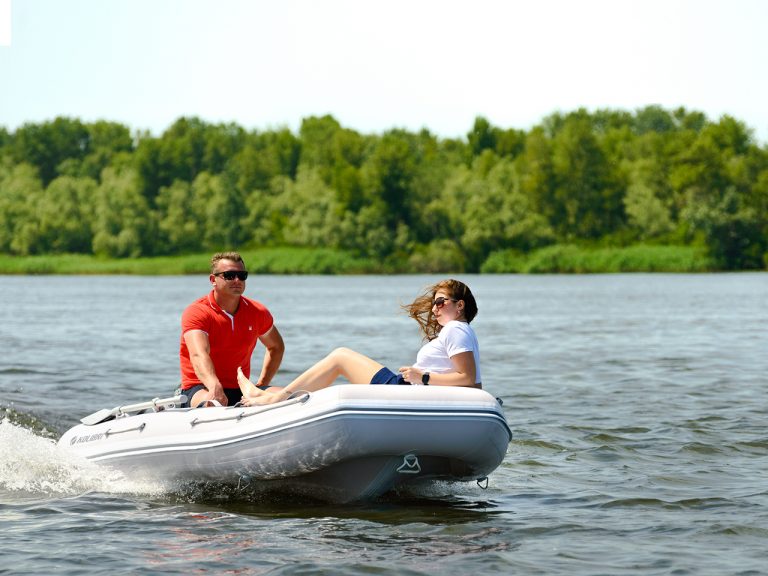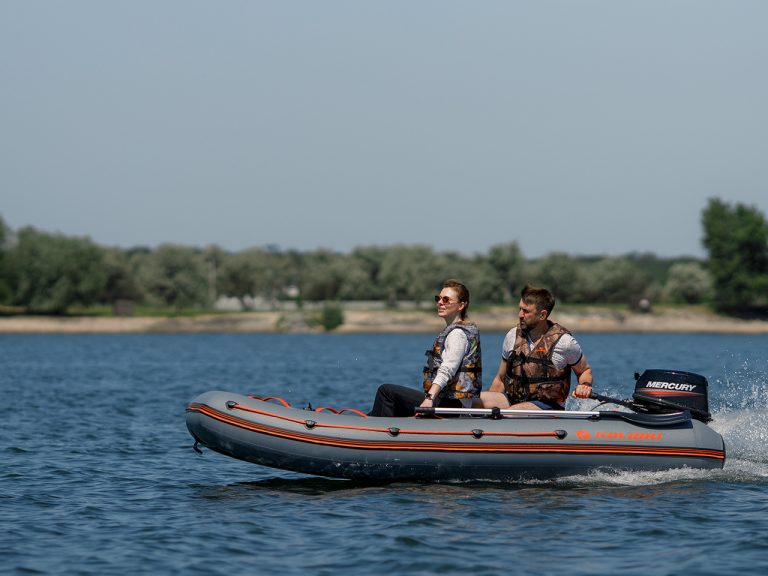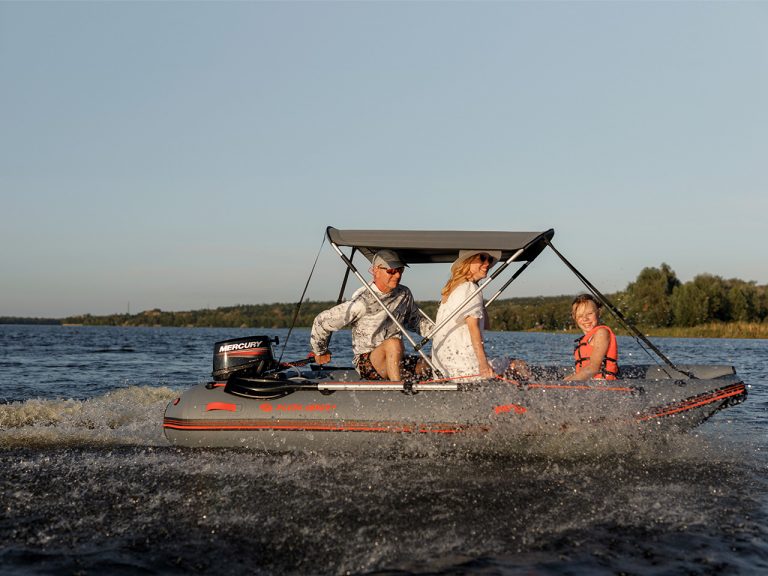What is the deadrise?
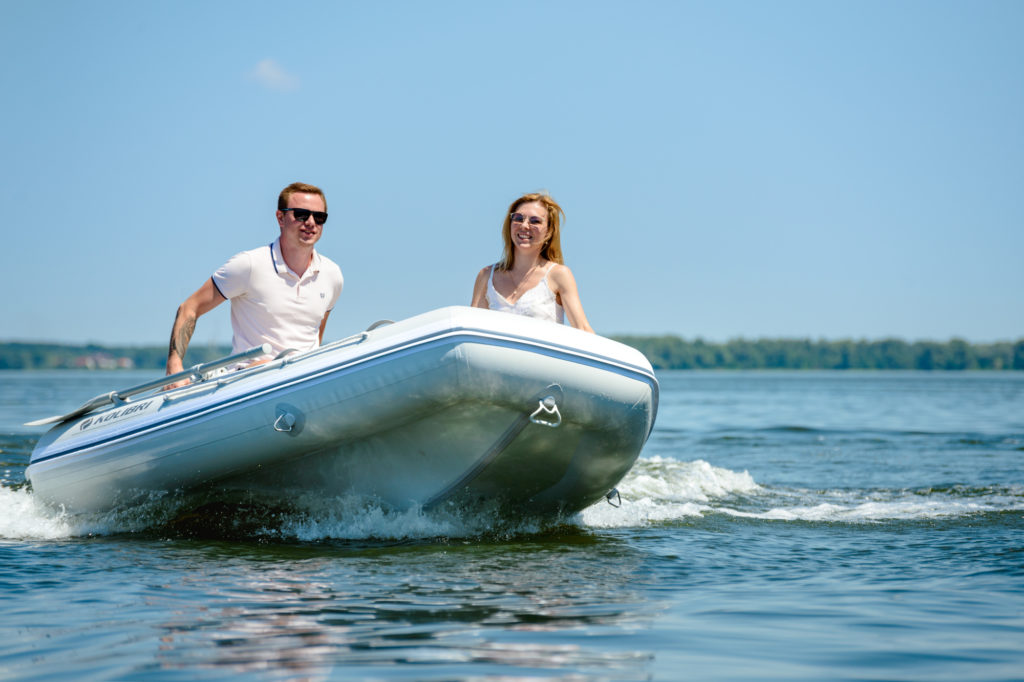
Deadrise is a cross-sectional shape of the bottom of the boat, which is characterized by a dihedral angle between the bottom and the horizon. This angle goes along the entire bottom of the boat, and it can be different in different parts of it (variable deadrise).
In simple words, the deadrise shows how flat or how ”sharp” the bottom of your boat is.
You should choose a boat with the deadrise that is suitable for certain operational conditions — speed mode, sea or river, water temperature, etc.
Deadrise values
For small vessels, the deadrise value is usually measured at the transom.
The deadrise of the boat can be:
- Zero (deadrise angle at the transom 0°-5°);
- Low (deadrise angle at the transom is 5°-10°);
- Medium (deadrise angle at the transom 10°-15°);
- Deep (deadrise angle at the transom is 15° -20°).
KOLIBRI keel boats have a deadrise angle of 11° at the transom.
The value of the deadrise angle often differs from the bow to the stern of the watercraft — it’s called the variable deadrise. At the bow, the angle is maximum, in the middle it’s lower and at the transom it’s even lower.
The variable deadrise angle “works” differently at different speeds. At low speed, such watercrafts use the advantages of a small deadrise angle (it’s stable due to a large area of contact with the water surface), and in planing mode – use the advantages of a large angle (high speed, confident maneuverability).
How to choose a deadrise for a PVC boat
- The deadrise of the hull softens the slamming force when hitting the water while moving in planing mode, the so-called landing impact. It is obvious that an almost flat-bottomed watercraft will hit the water harder than a watercraft with a higher deadrise angle.
- Boats with increased deadrise are more confident in maneuvering at speed, in this case the watercraft is heeling over in the direction of the turn. This reduces the risk of people and luggage falling overboard. Flat-bottomed boats while turning, on the contrary, heel over in the direction opposite to the turn.
- Keel boats have a higher speed in planing mode.
- Keel boats have a larger draft compared to flat-bottomed ones.
- Keel boats have low stability at low speed and when anchored or docked compared to flat-bottomed vessels.
- The deadrise angle of the bottom can also be chosen taking into account the water area where the watercraft is to be used – whether it’s fresh or sea water. For denser sea water, it is better to choose a watercraft with a significant deadrise angle, and for less dense fresh water — with a low one.
- Watercrafts with a certain deadrise value is operated differently in cold and warm water, this should also be taken into account when choosing the deadrise angle of a boat.
- The position of the helmsman in boats with different deadrise can both facilitate the way watercraft goes in the waves in the planing mode, and complicate it.
- The deadrise of the boat depends on the length and width of its hull, on where the center of gravity is located. A wider boat may be easier to get to plane, but it will start to sway longitudinally earlier compared to a narrower boat, even if these hulls have the same deadrise angle at the transom. A narrower boat with a large deadrise angle at the stern goes faster and softer.
Choose the deadrise of your boat according to your purposes, as there is simply no ideal deadrise angle for all occasions.
Classification of leisure boats by mode of movement
In different modes of movement, the effect of hydrodynamic forces on the hull of the watercraft has a different character, its trim also changes in different ways. Accordingly, there are the following distinctive modes of movement of small watercrafts on the water surface:
- buoyant (displacement) mode
- semi-displacement mode;
- planing mode.
Displacement mode
The displacement mode is observed at low speeds, when the watercraft, according to Archimedes principle, displaces almost the same volume of water while being anchored and moving. In other words, when moving, the watercraft is submerged in water almost as much as without movement. The buoyant forces affect the hull of the watercraft and the hydrodynamic moments of these forces are able to only slightly change its trim.
That is, for such sailing mode, you need to choose a flat-bottomed boat with zero or low deadrise angle. It will be as stable as possible when anchored, at lower speed when oaring or equipped with a low-power motor. Its draft will be minimal, which is an advantage when you go through shallow water.
Semi-displacement mode
Watercrafts for this mode of operation are intermediate between displacement ones and planing ones. The shapes of their hull are distinguished by sharp chine. There are also soft-chine hulls. The line of the chine of moderate curvature sinks into the water as it approaches the stern. The cross sections along the frames have a moderate deadrise.
For this mode of movement, you should choose a boat with a moderate deadrise.
Planing mode
The planing mode of operation is gliding on water under the effect of hydrodynamic forces. To confidently enter the planing mode, the specific load (weight related to power) does not exceed 20-25 kg/hp. With an increase of the deadrise angle, the specific load decreases, the comfort of riding on the wave rises — the force of the landing impact decreases.
Simple hull forms of planing watercrafts:
- with flat keel,
- with concave keel,
- with convex keel,
- flat-bottomed.
Complex hull forms of planing watercrafts:
- double-hulled,
- triple-hulled,
- others.
The main purpose of using complex hull forms is to increase the speed on the wave, i.e. to increase seaworthiness. As for inflatable boats, the use of complex hull forms, as a rule, is not relevant.
For planing mode of operation, you should choose a boat with a moderate or large deadrise. It will be as maneuverable as possible, will easily get to plane and will confidently moving through the waves.


